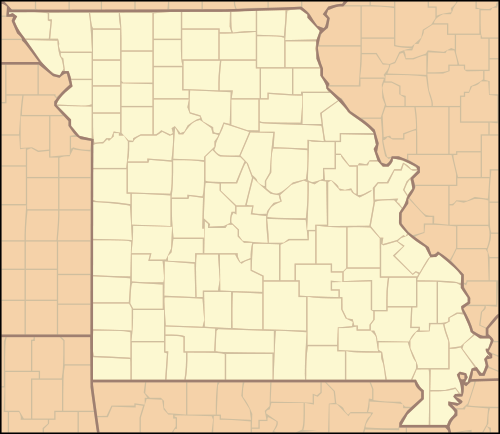Highway 270: Missouri
 This article is part of an ongoing biweekly series called “Highway 270,” which profiles heavily contested states in the 2012 election season. This week, I will examine the current political climate in Missouri, which has 10 electoral votes.
This article is part of an ongoing biweekly series called “Highway 270,” which profiles heavily contested states in the 2012 election season. This week, I will examine the current political climate in Missouri, which has 10 electoral votes.
Missouri has long been noted as one of the nation’s bellwether states. The state is located near the geographic center of the nation, and its demographic makeup is extremely similar to that of the nation as a whole. Missouri has voted for the victor in every presidential election but two (1956 and 2008) since 1904.
After Missouri failed to elect President Obama, many predicted that its bellwether status became a phenomenon of the past; CNN, Fox News, the New York Times and MSNBC all predict that MO will lean right for Romney in 2012. Obama’s campaign has, accordingly, expended minimal effort in winning that state, and his poll numbers there bear out his lackadaisical campaigning: aggregate polling currently puts Obama about six percentage points behind his opponent. Naturally, Obama will lose Missouri if he doesn’t begin an aggressive campaign there.
But thanks to Congressman Todd Akin, losing the Show-Me State doesn’t have to be inevitable anymore.
Congressman Akin, who won the Republican nomination for Senate last August, came under fire for outlandish remarks he made about rape. The congressman said that the body of a victim of “legitimate rape” had ways to “shut that whole thing down,” meaning that rape was unlikely to result in pregnancy for biological reasons. The result was instant infamy – Akin fell in polls, and major players of the Republican party, concerned that Akin would jeopardize their chances for a majority Senate, called (unsuccessfully) for the congressman to withdraw from the race.
It is quite possible that the “legitimate rape” gaffe will have faded in voters’ minds by November and that Akin might win a victory (if a narrow one) over his Democratic opponent, incumbent senator Claire McCaskill. Romney, who has no such comment to overcome, could coast to a victory by default, the natural result of an election where the Democrats lack either the impetus or the funds to campaign on the scale of their Republican opponents. In a state where federal SuperPAC money flows like the Mississippi River, this is both a possible outcome and a probable one.
But Missouri is not, necessarily, a red state—though it will become one if it continues to be neglected by Democratic campaign strategists. MO went blue in 1992 and 1996. Perhaps more tellingly, Obama’s 2008 loss was statistically irrelevant: the president lost by 0.1% of the vote, and could legally have ordered a recount. It’s possible he didn’t even truly lose the state in ‘08, and yet his campaign has ceded the 2012 loss without a battle.
An attempt by Democrats to up their Missouri numbers ought to focus on two central groups: women and students. As for the former group, Akin’s comments should still be ringing in voters’ ears as they head to the polls—but only an aggressive ad campaign can ensure that this happens. Obama would benefit in Missouri (as he does everywhere) from the fact that many of his policies appeal to women more than Romney’s equivalent ones. Indeed, Obama’s campaign has made a hallmark of its pro-feminist policies, from abortion rights to birth control accessibility, and his fairly consistent lead amongst female voters is demonstrative of the benefits of espousing such policies. (Admittedly, the most recent polling numbers show a slight dip on the president’s side, but this could likely be attributed to post-RNC convention bounce and will likely return to its previous ratio once the post-DNC polls are available.)
It would also be a refreshing change of campaign pace to see a resurgence of the Barack Obama that ran in 2008—namely, the candidate who courted youth voters with unprecedented tenacity. Missouri is home to about 70 universities, including the University of Missouri (which has about 64,000 students and is located in the left-leaning Boone County) and Washington University in Saint Louis, a top 15 school with 15,000 students. The tens of thousands of college students living in Missouri (and other toss-up states) represent an unexplored avenue for future political success.
College students are often ignored by major campaigns (outside of cursory social media efforts) because they do not donate meaningful amounts of money. That strategists put most emphasis on potential donors is understandable, but college students—whose political allegiances are largely undetermined—represent thousands of potential votes as well as potential future donors.
Then-DNC-chairman Howard Dean helped lead his party to presidential victory in 2008 with the now-famous fifty-state strategy, which refused to concede a single state to the Republican Party without a real effort. Admittedly, it is a very different election year, one in which Barack Obama’s grassroots donors are fewer and Mitt Romney’s Citizens United-based SuperPAC support is greater. Obama will not be able to launch a persuasive campaign in all fifty states. But a strong effort in Missouri—even an unsuccessful one—could prevent the state from becoming a Republican stronghold in years to come.
